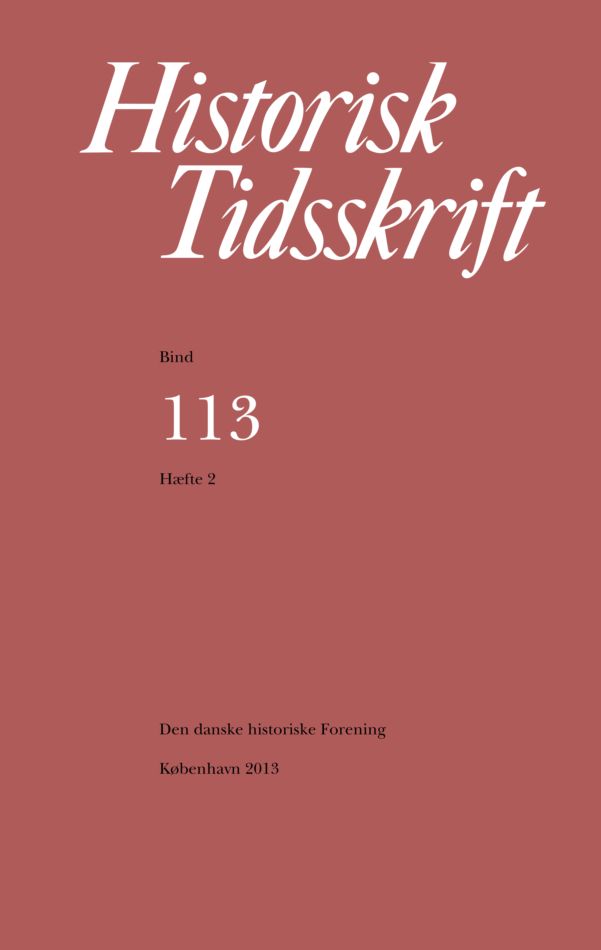Kredit og kreditiver i Danmark i det 16. og 17. århundrede i et europæisk perspektiv
Resumé
Credit and Letters of Credit in Denmark in the Sixteenth and Seventeenth Centuries, Viewed in a European Perspective The present study evaluates credit practise, including the use of credit instruments, in Denmark in the sixteenth and seventeenth centuries in the light of similar practise in the commercial centres of north-western Europe. Unfortunately, Danish sources provide very limited information on the subject. The archive material emanating from the principal Danish early modern trade and financial market, the annual fair in Kiel in the duchy of Holstein, yields no information on commercial credit practise. Normally, in so far as transactions were completed to the satisfaction of the involved parties, credit and money transfer arrangements left no trace in the form of documents and records. The exception was chartered trading and banking companies whose books have been preserved, but such enterprises did not exist in Denmark before the middle of the seventeenth century. Consequently, the principal sources are legal archives showing court decisions on defaults. Credit and money transfer instruments in the sixteenth and seventeenth centuries were almost the same as those used during the late Middle Ages. One of the earliest was mortgage by demise, where the lender received the profit from the mortgaged property until the loan was repaid. Ecclesiastical authorities, however, considered this to be payment of interest and hence a violation of the canonical usury doctrine. In 1160, the church decided that the operating surplus should serve to write down the principal, effectively turning the arrangement into an interest-free loan. Two examples of this credit practise have been found in Denmark as late as 1526 and 1540. This variety of a mortgage loan was a forerunner of a bond market based on buying and selling of interest. Here, the property owner received an amount of money, secured by the property, against payment of a fixed annual sum. This market was common in Germany. In the duchy of Holstein, the Rentenmarkt was regulated by the city council, whereas in Schleswig and the Danish Kingdom it took a less formal form, judging from the legal sources. Since the bonds were negotiable, they constituted an important instrument for the extension of credit and cashless payment among the merchants who made up the majority of participants in the market. A frequently used credit instrument was the letter obligatory, either drawn up by a notary or issued under private seal, but promissory notes, that are more informal bonds, were also in general use. From around 1525, these bonds were fully negotiable. Both letters obligatory under private seal and promissory notes appear in the Danish legal archives in the middle of the sixteenth century. In the sixteenth and seventeenth centuries, the most widely used commercial instrument for money transfer and credit in the Northern European trade centres was the bill of exchange, which already in the beginning of the sixteenth century was negotiable as well as discountable. The earliest bill of exchange found in Danish archives is from 1579. The first ordinance on bills of exchange appeared in 1681, suggesting that the use of bills must have been rather common before this time. No examples of dry exchange or ricorsa bills, used for circumventing usury laws by means of currency exchange, have been found. Generally, the study indicates that the credit instruments used in the North European trade centres in the sixteenth and seventeenth centuries were also employed in Denmark. Nevertheless, our knowledge on financial practise among Danish merchants is still very limited.Downloads
Publiceret
Citation/Eksport
Nummer
Sektion
Licens
Ophavsret til bidrag i Historisk Tidsskrift tilhører forfatterne og Den danske historiske Forening som udgiver af Historisk Tidsskrift. For illustrationer gælder den ophavsret, som står anført i billedteksten. Ophavsretslovens almindelige bestemmelser gælder, hvilket vil sige, at ophavsretten gælder i 70 år efter forfatterens død. Bidrag i Historisk Tidsskrift må derfor, med forbehold for en ”moving wall” på tre år, frit downloades, læses, gemmes, anvendes og citeres (med kildeangivelse) i privat og videnskabelig sammenhæng, men de må ikke helt eller delvis genudgives af tredjepart, heller ikke i redigeret form, uden tilladelse fra forfatterne og Den danske historiske Forening. Henvendelse skal i så fald rettes til Historisk Tidsskrifts redaktion på histtid@hum.ku.dk.





